- Call us: 01444 237070
- Contact Us
- Stores
- Sign In / Register
-
- Back
- Used Cameras
- Used Accessories
- Used Lenses
- Used Video
- Used Film Equipment
- Used Stock Alert
- Used Blank Test
- Sell or Part Exchange
- Used Clearance
- Recently Added Used Equipment
- Park Picks
- All Used Black Friday Deals
- Faulty
- Trade-In
- Blog
- New in
- Call us
- Contact us
- Stores
- Sign in
- Categories
- Tips & Inspiration
- Reviews
- News
- Events
- Features
- Buying Guides
- Competitions
Live music photography guide settings and kit
DSLR or Mirrorless? We look at recommended settings and the best camera and lens needed to take amazing concert / live music photos
Part one of our guide to live music and concert photography looked at how to get a press pass and what you can expect when taking live music photos.
In this part, we look at whether DSLR or mirrorless cameras are best for live music photography and what lenses to consider. We also look at recommended settings for low light photography - you'll nail the '3 songs, no flash' rule before you even know it!
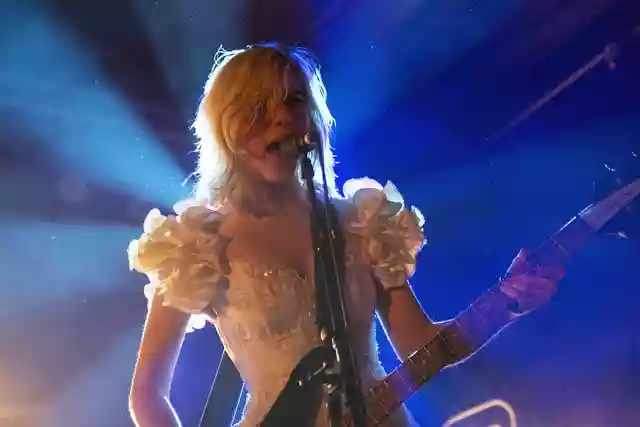
The art of concert photography explained
Why do I call concert / live music photography an art? It’s because to get a sharp shot you are playing with the finest margins of the ‘exposure triangle’:
- a shutter speed that lets in enough light without the image blurring,
- you must nail your focus point despite working with a wide aperture,
- use an ISO that is high enough to give you reasonable shutter speeds, without causing too much noise.
- Your subject is moving in and out of the limited light available
And that’s before you factor in composition, capturing 'the mood' and making sure the artist looks decent. Anyone from the model-like singer through to the punkiest guitarist can all pull a whole array of faces that only your shutter can capture. Using high-speed continuous drive mode helps to select the right facial expressions in post.
When starting out, don’t be put-off if your pictures of a local band in a small venue don’t compare to those pro snaps of Arctic Monkeys playing a stadium – the lighting setups will be worlds apart. Treat the early gigs in small venue as your chance to develop your style.
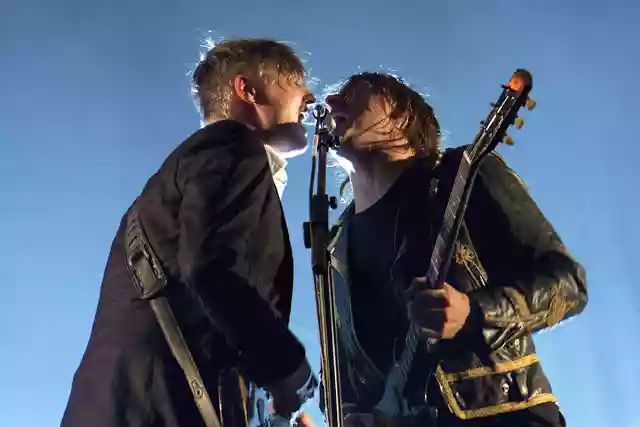
Best camera for live music photography - DSLR or Mirrorless?
You will undoubtedly want to go for either a DSLR or a mirrorless system, as you’ll need specialist lenses that you just won’t get with a compact or bridge style camera.
Choice normally comes down to affordability – a full frame sensor will offer better low light performance with less noise. This may cost more new, but it’s well worth considering a used, older model full frame DSLR.
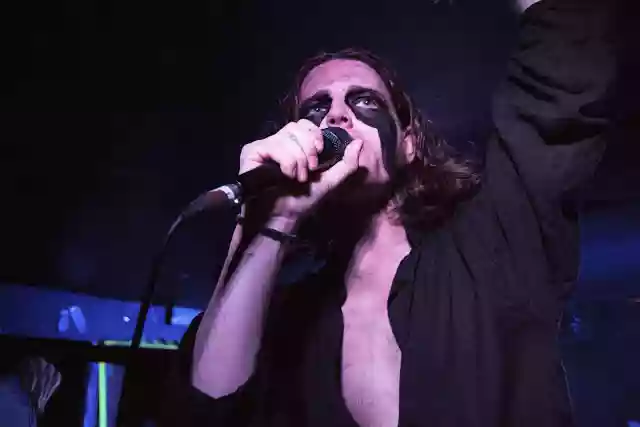
Is a DSLR or mirrorless camera better for music photos?
I’ve shot using a variety of different camera bodies - most regularly with DSLRs such as the Canon 70D (APS-C sized sensor) and the full frame Canon 5D and Canon 6D MK II, as well as the mirrorless full frame Canon EOS R and Sony a7R III.
APS-C DSLR
APS-C is a good way to start out, as the Canon EF-S 17-55mm f/2.8 is cheap for a fast wide-angle zoom lens. If you go APS-C it’s crucial to get a fast aperture lens, as you cannot push the ISO as high (without introducing too much noise). Otherwise you’ll struggle to get decent shutter speeds with standard kit lenses.
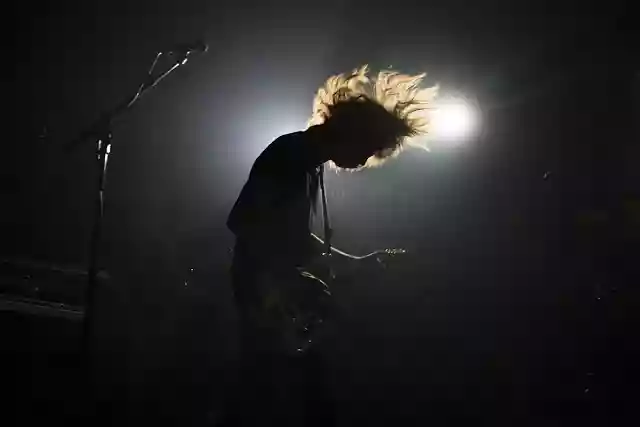
Full frame DSLR
A full frame DSLR with a vari-angle screen and good autofocus, would be my choice, as they offer less noise when shooting at high ISO and have an optical viewfinder.
Vari-angles screens come in surprising useful, and the one on the Canon 70D / 6D MK II / EOS R is the best I’ve used. They are especially convenient for shooting video, for shooting stills over the crowd, or if you are stuck in an awkward position (behind a pillar is sadly not uncommon).
Shooting gigs with mirrorless cameras
I’ve shot a couple of gigs with premium mirrorless cameras, and the resulting images can be great – see the clarity on the Brian Jonestown Massacre shot below. There are a couple of things usability issues that I found when switching from an optical to an electronic viewfinder.

Lag, blackout, banding and ‘image review’ can mean you end up shooting some of the gig blind, disrupting your anticipation of where the light will fall and when your subject will step into it. Some of the causes of blackout can be remedied (switching off image review), but if you are used to shooting with an optical viewfinder, as I am, then this was my biggest reservation.
Having said that, I’m generally a big fan of where mirrorless is heading, and would be keen to see if the Sony a9 has fewer ‘blackout’ moments. It's also fair to say that I've had years of experience using DLSRs, whereas mirrorless at a concert is still alearning curve for me.
Subject tracking is understandably less reliable in concert conditions, so mastering back-button focus and selecting your focus point helps.
‘What is the best lens for music photography?
Wide angle-zoom
As you are often close to the band, a wide-angle zoom is the one to go for – a 24-70mm f/2.8 is virtually the default choice across the trade. This allows wide shots of the bands on stage, while at 70mm you can still get smart portraits.
On an APS-C sized sensor look for a 17-55mm (which gives the same equivalent focal range).8.
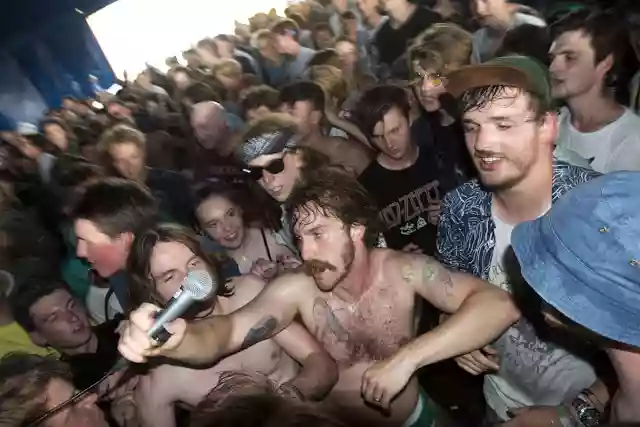
Fast Prime
A 50mm f/1.4 is desirable, but an f/1.8 is a highly recommended, cheap option that no concert photographer should be without. If you only have three songs you may not have time to switch over from your wide-angle zoom, so there is a reasonable chance you won’t always be using it.
BUT – and it’s a big but – sometimes even an aperture of f/2.8 is not enough. I’ve had gigs before where I’ve only shot on my 50mm f/1.4, and have thanked my lucky stars that I had it on me!
Telephoto Zoom lens
A telephoto zoom lens of 70-200mm f/2.8 is also needed when you want to make it as a pro. This allows you to shoot festivals, as well as those gigs with unusual restrictions. It also works as a great portrait lens.
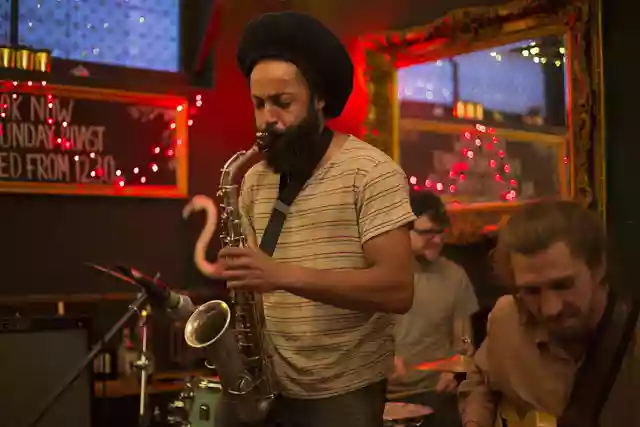
Best camera settings for live music/concert photography:
- Exposure Mode: Manual
- Aperture: Wide open, ideally f/2.8 or below
- Shutter: ideally between 1/100-200.
- You can push as low as 1/60, be aware this will capture some motion blur and potential camera shake. A faster shutter speed is better for freezing motion, but anything above 1/200 will likely underexpose in low light.
- ISO: 1600-3200, as high as you can go without noise
- A noisy picture can be rescued, but a blurry picture will never be sharp.
- Metering – Spot Metering
- Evaluative metering is fine for wide angle shots when you want to take a reading of the light across the whole scene. Spot metering should be used when you have one clear subject that you want to expose for.
- White Balance: Auto WB.
- Drive Mode: High Continuous
- File Format: RAW
- Especially important for getting the most from your dynamic range (normally bringing out the details in shadows and reducing highlights)
- Autofocus mode: Continuous (AF-C or AI-Servo) & back-button focus.
- Back-button focusing is also great to master, as it means you can select your focus point (often just in front of the microphone), and then you can fire when the subject and the light align.
About music photographer Ashley Laurence
Ashley has been taking concert photos for Brighton Source magazine since 2013, photographing artists such as Liam Gallagher, Idles and The Libertines, through to underground indie bands like The Blinders and numerous local artists, developing an intimate knowledge of Brighton music venues’ lighting systems along the way!
The most rewarding part? Nailing those sharp, colourful images of your heroes and rising stars.
See more of Ashley's work. Images originally shot for Brighton Source.
Dream kit:
Canon EOS R,
Canon EF 50mm f1.4,
Canon 28-70mm f/2,
Canon EF 70-200 f/2.8
or
Sony a9,
Sony 24-70mm f/2.8 GM,
Sony 50mm f1.4,
Sony FE 70-200 f/2.8
Share this post:
By Park Cameras on 25/10/2018

Trade in your old equipment
Fast and easy trade in service ensures your old gear is collected efficiently and you are paid quickly! It's very simple to trade in your unwanted photography gear. Just head over to our dedicated Sell or Part Exchange page, fill out the details, and we'll get back to you with an offer for your old gear. Take the cash, or put it towards the cost of your new gear. It's up to you! Find out more
sign up to the newsletter
Keep up to date on the latest photography news, events and offers. Sign up now